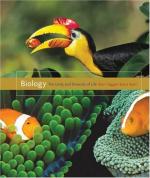|
This section contains 152 words (approx. 1 page at 300 words per page) |
The diversity, or variety, of animal species in the major groups is staggering. Scientists currently recognize more than one million species of animals, and this number does not include all species of bacteria, archae, and protozoa. Invertebrates make up 95 percent of the more than one million known species. Arthropods—spiders, horseshoe crabs, crustaceans, insects, centipedes, millipedes, and scorpions—are the most successful phylum in the animal kingdom. Arthropods account for 80 percent of all known species of animals. Insects are the most successful arthropods. Scientists estimate that there are one billion insects for each human on Earth!
 Graphic representation of the wide diversity of life forms on Earth.
Graphic representation of the wide diversity of life forms on Earth.
See Also
Biological Evolution; Phylogenetic Relationship of Major Groups.
Bibliography
Barnes-Svarney, Patricia. The New York Public Library Science Desk Reference. New York: Macmillan USA, 1995.
Ruppert, Edward R., and Robert D. Barnes. Invertebrate Zoology. Fort Worth, TX: Saunders College Pub., 1994.
|
This section contains 152 words (approx. 1 page at 300 words per page) |


